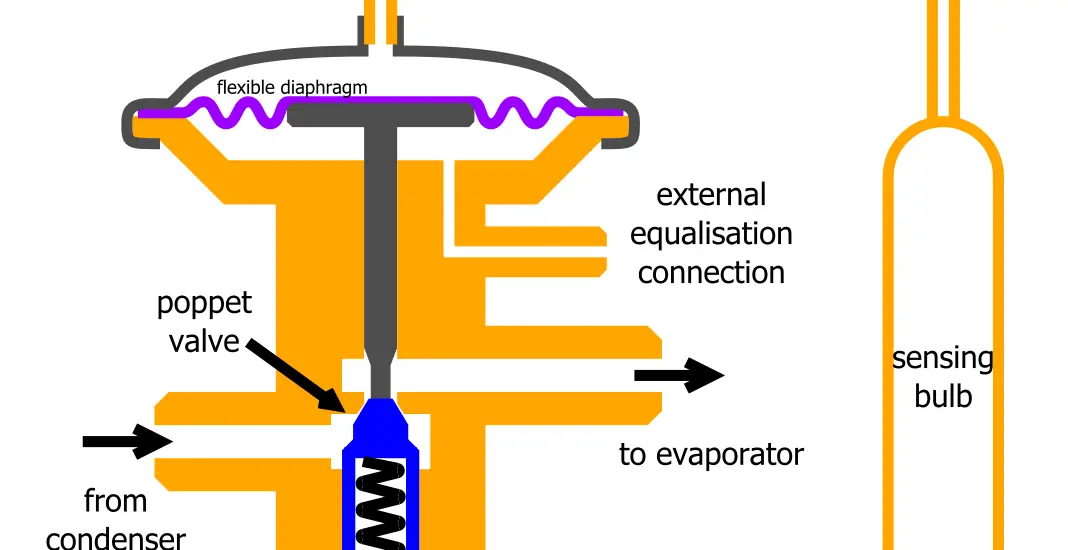This article will guide you through the process of adjusting superheat on TXV in simple steps.

Table of Contents
Materials and Tools Required
Before you start adjusting superheat on TXV make sure you have all the necessary tools and materials handy.
You will need a screwdriver to adjust the TXV, a wrench for securing connections, and a thermometer to measure the superheat.
You can get this Klein Tools 32500 11-in-1 Screwdriver / Nut Driver Set, Edward Tools Pro 8″ Adjustable Wrench, and ThermoPro TP30 Digital Infrared Thermometer from Amazon.
You might also find a notepad helpful for recording the original and adjusted settings.
Gathering these tools beforehand will facilitate a smooth and hassle-free adjustment process.
Adjusting Superheat on TXV: A Step-By-Step Guide
In this section, we will delve deep into the core of this guide – a meticulous step-by-step walkthrough on adjusting superheat on TXV. Let’s begin.
Ensure Safety
Your safety is our utmost priority. Start by turning off the HVAC system completely. Disconnect it from the power source to prevent any electrical mishaps.
Ensure that the area around the TXV is dry and free of any water leaks to avoid slips and falls.
Locate the TXV
The Thermostatic Expansion Valve (TXV) is generally situated close to the evaporator in your HVAC system. It might be encased or attached to a pipe.
It is vital to know its exact location to carry out the adjustments accurately. Refer to your system’s manual if you are unsure about its location.
The TXV is identifiable by its distinctive shape which includes a valve body, a sensing bulb, and an adjustment stem.
Measure the Current Superheat Level
Before making any adjustments, you need to determine the existing superheat level. To do this, use a thermometer to take readings of the suction line temperature. Simultaneously, record the pressure and then convert it to temperature using a PT chart.
The superheat value is obtained by subtracting the saturated suction temperature (from the PT chart) from the suction line temperature. Jot down this value as it will serve as a reference point in your adjustment process.
Adjustment
Now, you are set to start the adjustment process. If the superheat level is below the recommended range, you would need to increase the superheat on TXV.
Locate the adjustment stem on the TXV; it is usually a screw-like structure.
Use a screwdriver to turn the adjustment stem clockwise, which will increase the superheat. Make this adjustment in small increments, patiently, to avoid overshooting the desired superheat range.
Wait and Test
Having made the initial adjustments, allow the system to stabilize. This generally takes about 15-20 minutes. During this time, the system adapts to the new settings, allowing for accurate readings post-adjustment.
After waiting, re-measure the superheat to understand the impact of your adjustment. It’s a critical phase to guarantee the adjustments made are precise and in the right direction.
Finetuning
Depending on the new readings obtained, further fine-tuning might be necessary. It’s a trial-and-error process where you may need to go back and forth with slight adjustments until you reach the ideal superheat level.
Once reached, make sure to secure everything properly and double-check all the connections to ensure there are no leaks.
Check out these other articles…
Expansion Process in Thermodynamics: Comprehensive 411 Guide
What is Thermal Expansion: A Complete 101 Guide
How Does Thermal Expansion Work: A Comprehensive 411 Guide
TXV Valve vs Piston: A Comprehensive Comparison
When to Replace Expansion Valve: 3 Telltale Signs
The Importance of Accurate Superheat Adjustment
Setting accurate superheat levels is non-negotiable if you desire a long-lasting and efficient HVAC system. A correctly adjusted superheat prevents issues such as compressor failure and fosters improved system performance.